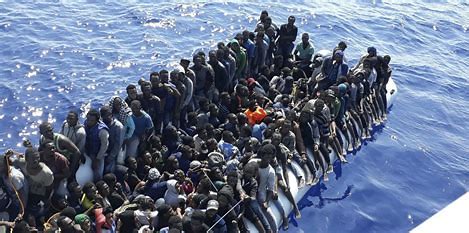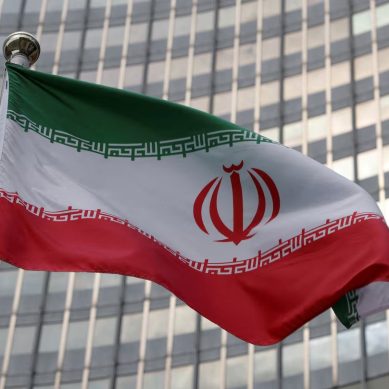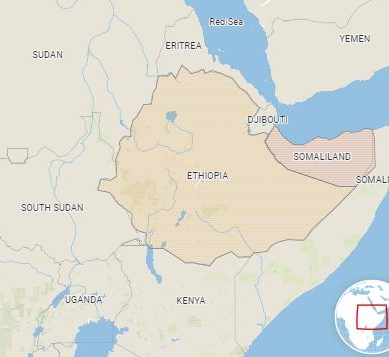
Why do dominant media and political narratives about migration tend to focus on the relatively small number of refugees, asylum seekers, and migrants attempting to reach the Global North irregularly and overlook the important role of South-South migration in development, inequality, and humanitarian crises? Because narratives about migration are dominated by media, politicians, and researchers in the Global North, Joseph Teye, director of the Centre for Migration Studies at the University of Ghana and co-director of MIDEQ, told The New Humanitarian. “Not everybody is moving to the Global North,” he noted. “The narratives have to change, and the narratives can only change when we decolonise the knowledge.”
Shifting the production of knowledge about migration toward the Global South is an effort that Teye and others have taken on at MIDEQ (Migration for Development and Equality), a hub of around 90 researchers. They study movement along six migration corridors between 12 countries in the Global South – one of the few research projects in the world dedicated to studying South-South migration.
The researchers are producing academic studies, policy briefs, and blogs about the dynamics and experiences of South-South migration to begin filling the knowledge gap. MIDEQ recently released an animated video aimed at bringing the idea of the need to shift migration narratives to a wider audience.
More people migrate within the Global South (around 37 per cent of all migrants) than from the Global South to the Global North (around 35 per cent). When it comes to refugees, 85 per cent are hosted in the Global South.
Yet that’s not a reality that journalists and scholars in the Global North often focus on, Teye explained, noting that what they see is an influx of people coming to Europe, especially since 2015. So that’s the story they tell, which has become the dominant, North-led narrative.
“Decolonising the story means that the writing on migration, the research, the storytelling should be led by scholars from the Global South working with scholars in the Global North,” Teye urged.
MIDEQ is trying to foster that work, although its funding for this year was reduced by 70 per cent in March after UK Research and Innovation, which backs the initiative, had its budget for international development research slashed by nearly 50 per cent. The reduction is part of substantial budget cuts to UK international development spending that are having widespread ripple effects throughout the aid sector.
The New Humanitarian recently spoke to Teye about the relationship between South-South migration and humanitarian crises, the policy consequences of the disproportionate focus on South-North migration, and the urgency around decolonising and reframing the story of migration.
The New Humanitarian: What do media narratives in the Global North often miss or get wrong about migration?
Joseph Teye: Usually, the narrative suggests an exodus from the Global South to the Global North. If you look at most of the countries in the Global South, most migrants move inter-regionally. They do not move to the Global North.
If you take Africa for instance, on average we have around 50 per cent of migrants moving within Africa. But when you come to regions within Africa – West Africa, for example, which is portrayed as a source of irregular migration to Europe – then you have about 64 per cent of migrants within West Africa moving to another destination in West Africa.
It was 80 per cent in 1990. The decline is not because they are moving outside of Africa, but there are now new destinations outside West Africa, but still inside Africa, such as Gabon or Equatorial Guinea. The only region where you tend to have a higher proportion moving outside the region is Northern Africa, and they are not going to Europe. They are going to the Middle East.
If a majority of people move within their regions, then there is a need to look at South-South migration, which has been neglected in the media narratives and also political narratives. Everybody’s focusing on South-North.
When we look at the impact of migration on development, if you think about remittances, the figures we’ve seen so far show that these are also increasingly sent within the region. Ghana, for example, receives a lot of remittances from Nigeria, Togo and Burkina Faso. If you are ranking them, the US comes first, the UK comes second, then it goes to Nigeria, Togo, Burkina Faso.
But we hardly talk about this South-South migration and its impact on development and inequality.
The New Humanitarian: How does the disproportionate focus on South-North migration affect policy? I’m thinking specifically about West Africa, where there has been a lot of policy focus on restricting migration, and you’re saying there’s a lot of migration within the region. Does the focus on South-North migration have a negative impact?
Teye: First of all, there is a concentration on what is termed to be “irregular migration” outside the region. If you look at West Africa’s dealings with the European Union, within the last five years, most of the policies of the European Union are focusing on addressing the so-called “root causes of migration” for people migrating outside West Africa, such as poverty, climate change and political issues.
We are not saying talking about those things is bad, but because of the focus on that, you realise the European Union’s externalisation policy in some West African countries, including Niger, is based on the assumption that everybody in West Africa is moving toward Europe. So the policies are trying to restrict mobility beyond Niger. But Niger has also signed a free-movement policy with other West African countries. So EU policies are restricting mobility, which has been a long-term part of livelihoods in West Africa and is something that West Africans don’t view as a problem.
Second, within West African countries, the focus on South-North migration means that when governments are designing policies to harness the benefits of migration – including remittances – they tend to focus only on diasporas that are in the Global North, such as the US, the UK, and Germany. They forget that there are also diasporas within their region that could be tapped for development. Unless we present data to governments to show that people within that region can also contribute to development, that is not thought about at all.
Lastly, when it comes to protection of migrants and dealing with inequality issues, again the focus is only on the South-North. Nobody is talking about migrants that are still within the region. So, there is a mismatch between the situation on the ground and the policies that are coming out.
- The New Humanitarian report











